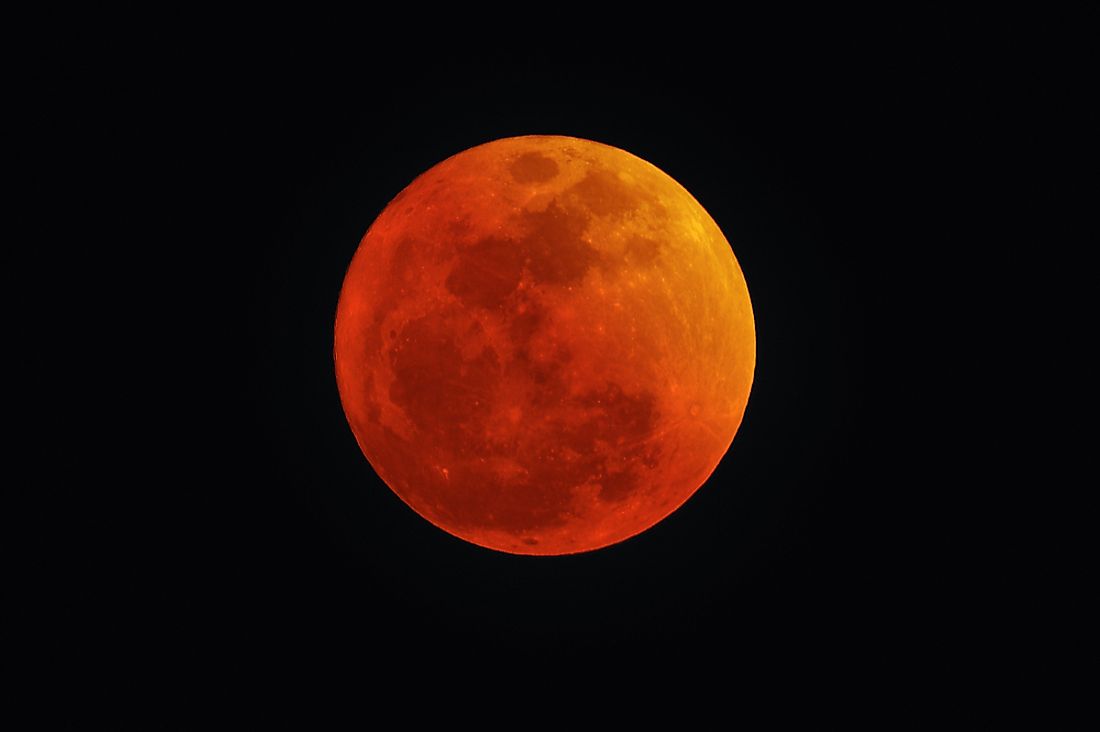What is a Blood Moon?

A lunar eclipse appears when the Earth, the Moon, and the Sun align in a straight line with the Earth in the middle. A lunar eclipse only occurs on a night of a full moon. A complete lunar eclipse always has the direct sunlight obstructed by the Earth’s shadow. A sunset is always red because of Rayleigh scattering of the blue light. In the same vein, such a lunar eclipse will be reddish as result, hence the name Blood Moon.
A Blood Moon, in recent times, refers to four successive lunar eclipses. For an eclipse to be a Blood Moon, it has to be completely reddish. Although a tetrad refers to four items in a group, in astronomy a tetrad is the name given to four consecutive lunar eclipses. These four eclipses do not have a partial eclipse in between them and they quite often occur in a sequential manner with a six-month gap between each of such successive eclipse.
Origin
The term blood moon can trace its origins from the Christian belief in the apocalypse; the events that will serve as a precursor to ending time. John Hagee and Mark Biltz are the two Christian preachers who brought forth this name based on their beliefs in the apocalypse. These Christian beliefs adduce that the occurrence of a tetrad is an ominous indication of end times. The book of Acts 2:20, the book of Revelation, and the book of Joel support this belief largely. John Hagee has in fact written a book on Blood Moons titled Four Blood Moons: Something is About to Change, which further seeks to lay bare this mystical tetrad, which first occurred in April 2014. In any case, Joel 2:31 says that before the end time, the moon will turn blood red while its daytime counterpart, the sun, will be totally darkened in the eve of God’s dreadful day. The two Christian ministers have been popularizing the 2014-2015 lunar tetrads through their Biblical teachings, which underscore the presence of a Blood Moon at the end times. Thus, the term Blood Moon is largely associated with the glorious day of the Lord.
Hunter’s Moon
The Hunter's Moon is the full moon preceded by the Harvest Moon. The Hunters’ Moon is a traditional term used in reference to a full moon, which occurs in late summer and autumn. This full moon normally shows up in September and October respectively in the northern hemisphere. The name Hunters’ Moon is largely associated with native country people. Since 1968, West Lafayette celebrate the Feast of the Hunters’ Moon every late September or early October annually. Full moons, in their characteristic, occur around the time the sunsets. With each successive night, the moon rises approximately thirty minutes later than the previous day. This is what makes the Hunter's Moon unusual. This entire phenomenon is visible from about 40 degrees N or S latitude. After the actual date of the moon, there is thus a longer period of pitch darkness in the period interceding sunset and moonrise.











